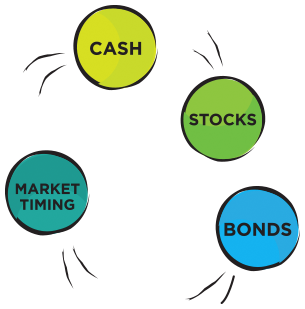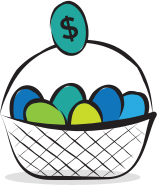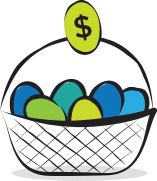





Contribution

Contribution




















Question 1 of 6
Which of the following is most consistent with your investment philosophy?
A portfolio will most likely...
Question 2 of 6
Possible Average Value at the End of the Year |
Chance of Losing Money at the End of the Year |
|
| Portfolio A | $106,000 | 16% |
| Portfolio B | $107,000 | 21% |
| Portfolio C | $108,000 | 25% |
| Portfolio D | $109,000 | 28% |
Question 3 of 6
Question 4 of 6
Question 5 of 6
Question 6 of 6
Risk Questionnaire Results: Aggressive

 89% Equities
89% EquitiesStocks
 11% Non-Equities
11% Non-EquitiesBonds (Fixed-Income)
Cash (Money Market)
Guaranteed
“I can stomach a big drop in my investments' value — even over several years — in pursuit of long-term growth.”
Risk Questionnaire Results: Conservative

 17% Equities
17% EquitiesStocks
 83% Non-Equities
83% Non-EquitiesBonds (Fixed-Income)
Cash (Money Market)
Guaranteed
“Downturns make me very nervous. I'll accept the lower long-term growth in exchange for rock solid stability.”
Risk Questionnaire Results: Moderately Conservative

 37% Equities
37% EquitiesStocks
 63% Non-Equities
63% Non-EquitiesBonds (Fixed-Income)
Cash (Money Market)
Guaranteed
“I can tolerate some volatility in a small portion of my investments for the chances of a higher return longer-term.”
Risk Questionnaire Results: Moderately Aggressive

 75% Equities
75% EquitiesStocks
 25% Non-Equities
25% Non-EquitiesBonds (Fixed-Income)
Cash (Money Market)
Guaranteed
“I'm willing to accept greater volatility and risk by tilting my investments toward growth.”
Risk Questionnaire Results: Moderately Conservative

 37% Equities
37% EquitiesStocks
 63% Non-Equities
63% Non-Equities
Bonds (Fixed-Income)
Cash (Money Market)
Guaranteed
“I can tolerate some volatility in a small portion of my investments for the chances of a higher return longer-term.”
Conservative

| Usually seeks greater stability and lower level of risk. |
Moderately Conservative

| Usually seeks a balance between safety and growth, but still very concerned with preserving existing accumulations. |
Moderate

| Usually seeks a balance between safety and growth. |
Moderately Aggressive

| Probably willing to take somewhat more risk in pursuit of greater growth. |
Aggressive

| Probably comfortable with a higher level of risk to pursue growth potential. |

 Equity
Equity
 Non-equity
Non-equity







Question 1 of 3
Question 2 of 3
Question 3 of 3




Select Choice
Managed Funds, Annuities)

to market index

general market

income over lifetime
Brokerage
Account



Select Choice
Managed Funds, Annuities)

to market index

general market

income over lifetime



Brokerage
Account












